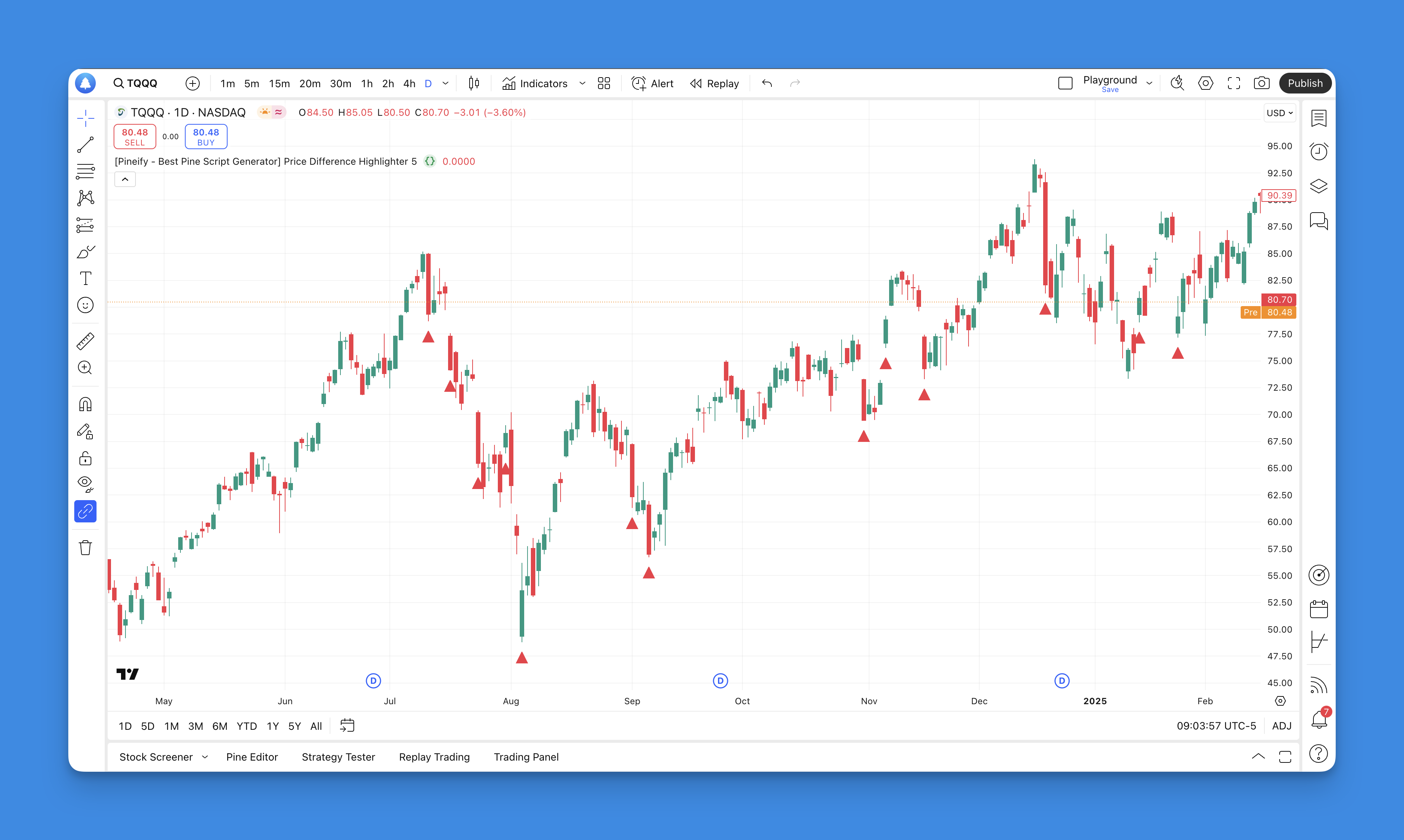Understanding math.abs() Function in Pine Script
As a trader or developer working with TradingView, understanding how to leverage Pine Script is crucial for creating effective trading strategies and indicators. One fundamental aspect of Pine Script is the use of mathematical functions, particularly the absolute value function. In this article, we’ll delve into the Pine Script absolute value function, exploring its syntax, applications, and how it can enhance your trading analysis.

What is the Absolute Value Function in Pine Script?
The absolute value function in Pine Script, denoted as math.abs() or simply abs(), is used to return the absolute value of a given number. This means it removes any negative sign, ensuring that the output is always positive. The syntax for using this function is straightforward:
absValue = math.abs(x)
Here, x can be any integer or float value.
Applications of Absolute Value in Trading

The absolute value function is particularly useful in scenarios where you need to normalize negative values. Here are some key applications:
- Price Difference Calculations: When analyzing price movements, you often need to calculate the magnitude of changes without considering direction. The absolute value function helps in such calculations by ensuring that all price differences are treated as positive values.
- Volatility Measurements: In volatility indicators, absolute values can help measure the magnitude of price fluctuations over time, providing a clearer picture of market volatility.
- Custom Indicators: Absolute values are essential in creating custom indicators that require positive inputs for calculations, such as moving averages or oscillators.
Using Pineify for Simplified Pine Script Development
When developing indicators and strategies in Pine Script, tools like Pineify can significantly simplify the process. Pineify allows users to create and manage indicators without needing extensive programming knowledge, which is particularly beneficial when working with functions like math.abs().

Website: Pineify
Pineify offers a visual interface that enables users to build complex indicators and strategies quickly. This platform bypasses TradingView's limitations on the number of indicators that can be added to a chart, allowing for more comprehensive analysis. Users can import custom Pine Script code, customize it, and integrate it into their strategies. The platform also supports various technical analysis indicators and allows for the creation of entry and exit strategies, including market orders, take-profit, and stop-loss orders.
Click here to view all the features of Pineify.Practical Example: Highlighting Significant Price Differences
To illustrate the use of the absolute value function, let’s create a simple Pine Script indicator that highlights significant price differences:
// This source code is subject to the terms of the Mozilla Public License 2.0 at https://mozilla.org/MPL/2.0/
// © Pineify
//======================================================================//
// ____ _ _ __ //
// | _ \(_)_ __ ___(_)/ _|_ _ //
// | |_) | | '_ \ / _ \ | |_| | | | //
// | __/| | | | | __/ | _| |_| | //
// |_| |_|_| |_|\___|_|_| \__, | //
// |___/ //
//======================================================================//
//@version=6
indicator("[Pineify - Best Pine Script Generator] Price Difference Highlighter", overlay=true)
thresholdValue = input(5.0, title="Threshold Value")
// Calculate the absolute difference between the current and previous close prices
priceDifference = math.abs(close - close[1])
// Plot a shape if the price difference exceeds the threshold
plotshape(series=priceDifference > thresholdValue, location=location.belowbar, color=color.red, style=shape.triangleup, size=size.small, title="Significant Price Difference")

Key Takeaways
- Function Usability: The
math.abs()function is versatile and easy to integrate into various calculations, making it a valuable tool for traders and developers. - Syntax and Application: The function requires a single argument and returns the absolute value, simplifying its use in conditions and calculations.
- Versatility: It can be applied in a wide range of trading strategies and indicators, from volatility measurements to custom oscillators.
Conclusion
Mastering the absolute value function in Pine Script can significantly enhance your trading analysis and strategy development. Whether you’re a seasoned trader or just starting out, understanding how to leverage this function can help you create more effective indicators and improve your trading outcomes.
